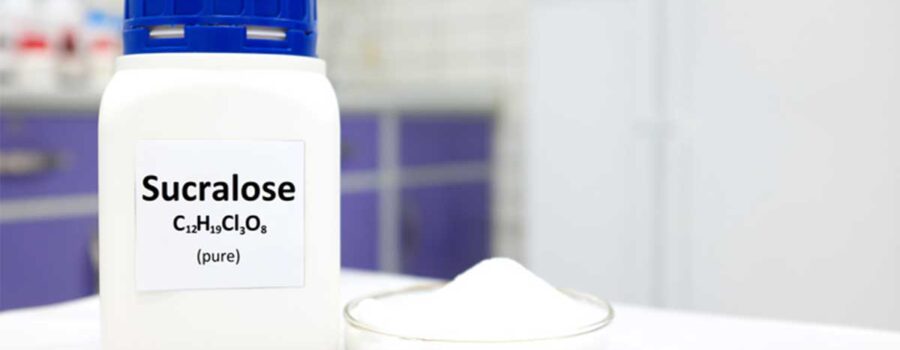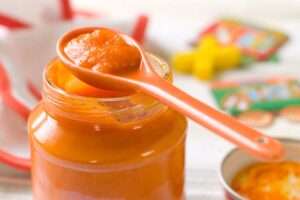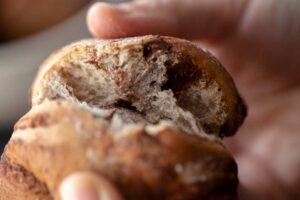Hey there, fellow parents! Let’s talk about something we all encounter in our daily lives—sweeteners. Particularly, one that might be sitting in your kitchen right now: sucralose. We’ve all seen it, that artificial sweetener hiding in our “diet-friendly” foods and drinks. But did you know it’s currently under some heavy fire? That’s right, sucralose and its derived compound, sucralose-6-acetate, might not be as benign as we’ve been led to believe.
The Truth About Sucralose
Who doesn’t love a bit of sweetness in their life? It’s why so many of us have turned to sucralose as a sugar substitute. It’s found in everything, from diet sodas to sugar-free desserts. But here’s the kicker—recent studies, including one led by Susan Schiffman, an adjunct professor at North Carolina State University, suggest this sweetener is not as innocent as it seems.
This study threw a spotlight on sucralose-6-acetate, a compound that forms in our gut when we digest sucralose. They discovered that this compound could be genotoxic, which means it can potentially damage our DNA. But what’s even more alarming is that trace amounts of this compound can be found in off-the-shelf sucralose, even before it enters our bodies.
What does that mean for us? Well, the European Food Safety Authority sets a toxicological concern threshold for genotoxic substances, and you won’t believe this – the trace amounts of sucralose-6-acetate found in a single daily drink sweetened with sucralose exceed this threshold.
The Nitty Gritty Details
Schiffman’s team were thorough in their study. They exposed human blood cells to sucralose-6-acetate, and they found clear markers of genotoxicity. To put it simply, the stuff broke up the DNA in the cells.
They also looked at how sucralose-6-acetate affects gut health. The results? When gut epithelial tissues were exposed to sucralose and sucralose-6-acetate, these chemicals seemed to cause a ‘leaky gut’. This condition allows substances that should be expelled from the body in feces to leak from the gut and be absorbed into the bloodstream – and that could have a whole range of health implications.
What it All Means
So, here’s the takeaway. We might need to rethink our love affair with sucralose. As the evidence piles up that it carries considerable risks, we should consider steering clear of it. But this isn’t just about sucralose—it’s a wake-up call for us to look more closely at all artificial sweeteners.
Safer Sweeteners: The Whole Foods Approach
Alright, we get it. We all have a sweet tooth. But did you know there are ways to satisfy those cravings without resorting to artificial sweeteners?
Consider honey and maple syrup, for example. It’s natural, loaded with nutrients, and even has some antioxidants thrown in for good measure. Fruits, too, can be fantastic sweeteners. They’re naturally sweet thanks to fructose and are loaded with fiber and beneficial compounds. Spices like cinnamon and nutmeg can also add a sweet kick to your meals without the added health risks.
Balancing Blood Sugar Naturally
Managing our blood sugar levels is crucial for optimal health. How do we do that? By eating balanced meals. Try to include a source of protein, fat, and fibre with each meal. These foods can help slow the release of sugar into your bloodstream, preventing sugar highs and crashes.
Also, try not to eat sugar-rich foods alone. Pair a piece of fruit with some nuts or a hard-boiled egg. Regular physical activity is another great way to maintain stable blood sugar levels. Even a quick walk after meals can make a difference.
In a Nutshell…
Recent findings show that sucralose, a common artificial sweetener, and its byproduct, sucralose-6-acetate, can cause DNA damage and affect gut health. It’s time to reconsider our use of such sweeteners and opt for healthier, natural options. Balancing our blood sugar levels through a balanced diet and regular physical activity can greatly contribute to our overall health. It’s all about making informed choices for ourselves and our families!
Remember, we’re all on this parenting journey together. Stay informed, stay safe, and here’s to our health, and our kids’!
References:
- Schiffman, S. S., et al. (2023) Toxicological and pharmacokinetic properties of sucralose-6-acetate and its parent sucralose: in vitro screening assays. Journal of Toxicology and Environmental Health Part B. doi.org/10.1080/10937404.2023.2213903.
- “Threshold of Toxicological Concern.” European Food Safety Authority, www.efsa.europa.eu/en/topics/topic/threshold-toxicological-concern.
- Marcelo Campos, MD. “Leaky Gut: What Is It, and What Does It Mean for You?” Harvard Health, 16 Nov. 2021, www.health.harvard.edu/blog/leaky-gut-what-is-it-and-what-does-it-mean-for-you-2017092212451.
- “Honey.” Mayo Clinic, Mayo Foundation for Medical Education and Research, 14 Nov. 2020, www.mayoclinic.org/drugs-supplements-honey/art-20363819.
- Malin, Alecia S et al. “Intake of fruits, vegetables and selected micronutrients in relation to the risk of breast cancer.” International journal of cancer vol. 105,3 (2003): 413-8. doi:10.1002/ijc.11088
- “Insulin Resistance and Diabetes.” Centers for Disease Control and Prevention, 20 June 2022, www.cdc.gov/diabetes/basics/insulin-resistance.html.
- Paterson, Megan et al. “The Role of Dietary Protein and Fat in Glycaemic Control in Type 1 Diabetes: Implications for Intensive Diabetes Management.” Current diabetes reports vol. 15,9 (2015): 61. doi:10.1007/s11892-015-0630-5
- Buffey, A.J., Herring, M.P., Langley, C.K. et al. The Acute Effects of Interrupting Prolonged Sitting Time in Adults with Standing and Light-Intensity Walking on Biomarkers of Cardiometabolic Health in Adults: A Systematic Review and Meta-analysis. Sports Med 52, 1765–1787 (2022). https://doi.org/10.1007/s40279-022-01649-4








